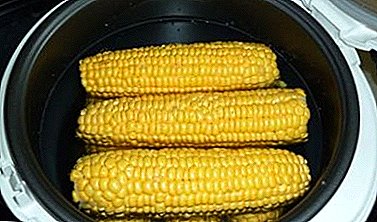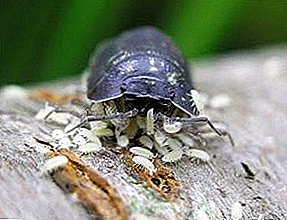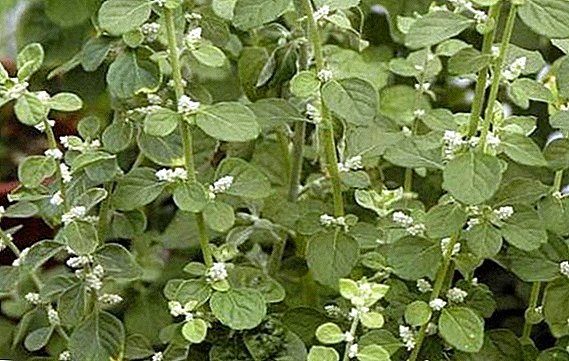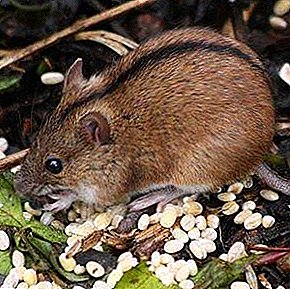 Currant is one of the most delicious and healthy berries, care for shrubs which every gardener can do and is required mainly in autumn. Its application can be found both in cooking and in medicine. In the first case, compote and jam are boiled from currant berries, consumed fresh, even currant leaves are used for preservation, and fragrant teas are brewed from them. In medicine, black currant is used for the prevention of various diseases. Currants can be found in almost every summer cottage. To currant bushes every year gave a big crop, you need to carry out autumn work with currants. This article provides tips on caring for currant bushes.
Currant is one of the most delicious and healthy berries, care for shrubs which every gardener can do and is required mainly in autumn. Its application can be found both in cooking and in medicine. In the first case, compote and jam are boiled from currant berries, consumed fresh, even currant leaves are used for preservation, and fragrant teas are brewed from them. In medicine, black currant is used for the prevention of various diseases. Currants can be found in almost every summer cottage. To currant bushes every year gave a big crop, you need to carry out autumn work with currants. This article provides tips on caring for currant bushes.
Rules for autumn trimming currant bushes
For many years in a row there was a good harvest and each berry was large, we need proper care for the currants. To do this, and should be pruned bushes, it is best to do this in the fall. First of all, you need to cut off all the old branches, on which small berries.
Important! Everything that lies on the ground around the bush must also be removed.
The branches that sprout into the bush and thicken it, it is better to cut a little. From weak or broken branches, on which there are very few shoots, you need to get rid of. You can create a strong and beautiful currant bush if you leave 4-6 branches. The following year, even remove up to three branches, but leave a couple of new ones. Currant belongs to the densely growing shrubs, so the correct pruning greatly simplifies the care of it in the fall. 
Autumn soil care
In autumn, the soil should be dug 8-10 cm closer to the currant bush. At this time, under the excavated soil lay fertilizer. If it is peat, compost or manure, it is necessary to bring up to 15 kg under a bush once every three years.
Did you know? If this fertilizer is not, then it is replaced by a mineral fertilizer. To do this, use 90-120 g of superphosphate and 20-40 g of potassium chloride under the bush.
Mulching currant soil is also carried out in the fall.
How to spray currants in the fall against pests and diseases
 Caring for currants in the fall also involves the treatment of pests. Among them, the most common is the tick mite. Females penetrate the currant buds, as a result of which they swell. For spraying against pests and diseases using a 2% solution of nitrophene or 0.2% solution of karbofos. Spraying is best done at a temperature not lower than 20 ° C, otherwise after the procedure the bushes must be wrapped in polyethylene.
Caring for currants in the fall also involves the treatment of pests. Among them, the most common is the tick mite. Females penetrate the currant buds, as a result of which they swell. For spraying against pests and diseases using a 2% solution of nitrophene or 0.2% solution of karbofos. Spraying is best done at a temperature not lower than 20 ° C, otherwise after the procedure the bushes must be wrapped in polyethylene.
Important! If this is not done on time and infected buds open, then the mites that come out will penetrate the new buds.
After the first spraying, the procedure is repeated 10 days later. After flowering, currant is sprayed with a solution of karbofos or 1% colloidal sulfur. However, some prefer the tinctures of garlic, wormwood or tobacco, rather than pesticides.
How to fertilize currants in the fall, feeding plants before winter
Feeding in the fall must be, because the currant absorbed all the organic matter from the ground, so it needs to be fed to the plant to survive the winter. This procedure should be carried out immediately, immediately after harvest. Caring for black currants involves feeding in the fall; nitrogen fertilizers and superphosphates are used for this until the end of September. Ammonium nitrate accelerates root activation and improves the absorption of moisture from the soil.
Did you know? Humus and compost should be laid in the soil as late as possible - in October or November. Since decomposition occurs after a couple of months, important chemicals that the plant needs will act closer to spring, when necessary.
Care and feeding currants also carried out through the leaves. Abundant spraying of the bush with carbamide should be done every three weeks. Together with nitrogen supplements, this will give an immediate effect.
How to keep currants in winter, bending down branches
 Currants are considered to be fairly resistant to frost. It can withstand up to -25 ° C, but if the frost is more, the branches will die off and the harvest will be much smaller. With proper care, currants can withstand up to -50 ° C. To do this, bend the bush so that the branches are pressed to the ground as far as possible, then the frosts for currants will not be terrible. This can be done in several ways:
Currants are considered to be fairly resistant to frost. It can withstand up to -25 ° C, but if the frost is more, the branches will die off and the harvest will be much smaller. With proper care, currants can withstand up to -50 ° C. To do this, bend the bush so that the branches are pressed to the ground as far as possible, then the frosts for currants will not be terrible. This can be done in several ways:
- To press down something heavy, for example a brick. All branches should not be laid under one brick. It is better to take 6-7 bricks and distribute between all branches.
- Dig into the ground. Earth can be used as insulation. The plant can withstand temperatures down to -35 ° C.
- Wrapping branches with insulation. Since the plant must breathe, you should not wrap branches in polyethylene. Each must be wrapped in agrofibre, if desired, add mineral wool. This method is the most frost-resistant. The plant is able to withstand temperatures down to -45 ° C.
Now you know what to do with blackcurrant in the fall, how to properly trim and feed the plant, how to protect it from pests and frost. Thanks to these tips, you can pamper yourself every year with delicious berries straight from the garden.












